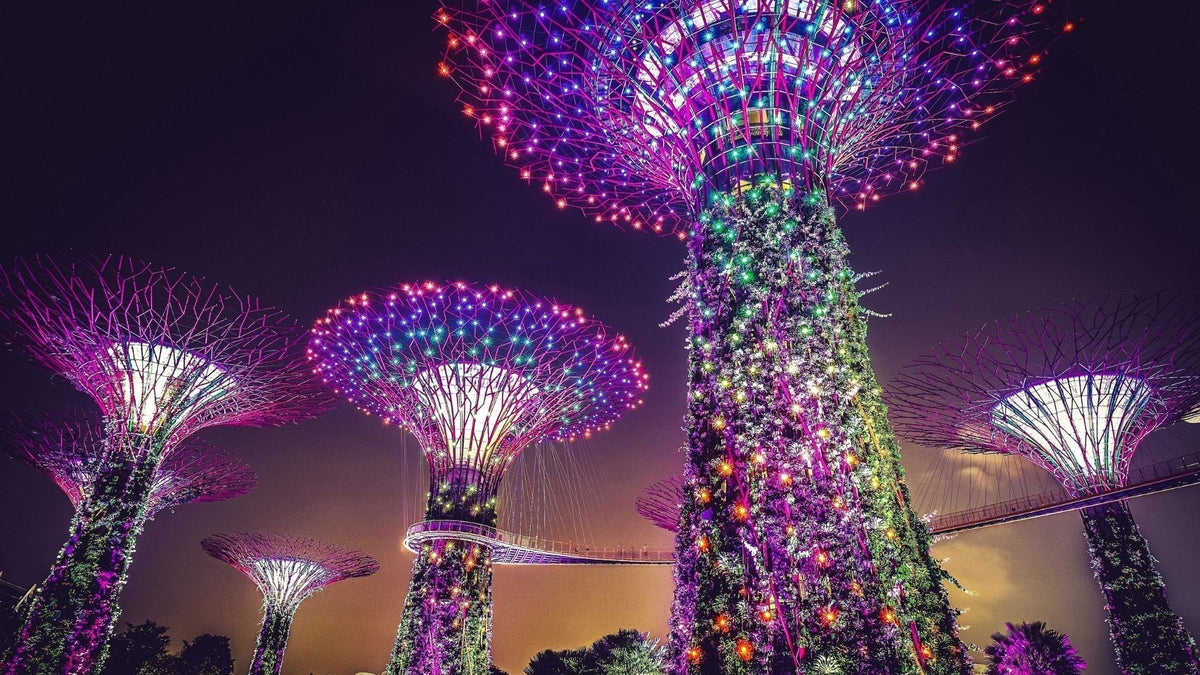Therapeutic Gardens & Inclusive Wellness: Singapore’s Sustainable Tourism Revolution

27 March 2025 | to be reviewed March 2026 | The Osé Team
Singapore is often famed for its public transportation, safe streets, amazing food scene, and the massive indoor waterfall in its airport, but now it seems Singapore is targeting a different market; sustainably designed therapeutic gardens. These gardens, according to the National Parks Board in Singapore, were designed in partnership with scientists to gently stimulate each of our senses: sight, sound, taste, touch and smell, to soothe those with autism, dementia, ADHD and anxiety. The 16 parks that have currently been constructed are a little over the first half of a 30-park project aimed to redefine Singapore’s tourism sector with wellness and inclusions at the heart of it.

The Crazy Rich Asians Wedding Reception Park!
If you remember the wedding reception location from Crazy Rich Asians as well as we do, then you already have a touchstone for Singapore’s commitment to eco-conscious landmarks. Gardens by the Bay at over 250 acres in the middle of the city is one of the better known park projects on the island. The NBP has taken it a step further and decided that renewable energy and biodiversity was just their starting point.
The first of the therapeutic gardens was HortPark, where neuroscientists and psychologists studied 92 of the park’s visitors and discovered visitors of the park experienced benefits such as, improved mood, better regulated emotions, lower stress, and reduced body inflammation compared to visits to regular gardens around the city.
Therapeutic gardens are a public health measure in Singapore, what a concept, that is part of a larger plan aimed at creating unique attractions including, flotation treatment centers, curative light studios, and art therapy galleries, aimed at not only enticing wellness tourism but rather, redefining it.

What Makes Singapore’s Wellness Tourism Eco?
Singapore is actually well known for its commitment to eco-responsible solutions. A popular tourist attraction, the Mandai Wildlife Reserve is a well known network of parks and zoos that is committed to the preservation and welfare of wildlife and the planet in Singapore and across Southeast Asia. The famed Gardens by the Bay, itself runs on renewable energy and is known for its biodiverse native flora. The therapeutic parks are no exception to the eco standard Singapore has set. The various gardens are adorned with biodiverse flora that is meant to attract pollinators like bees, butterflies, and birds.
Singapore has been doing it before it was cool. Back in 1963, Singapore looked around and decided they wanted to prevent their beautiful city from becoming a concrete jungle. Thus, thousands of volunteers got together to plant trees, create community gardens and eventually build incredible attractions such as Gardens by the Bay.
Sensory Experiences Help Those with Dementia, ADHD and Autism
In most city parks you aren’t encouraged to pluck the herbs you see or give them a taste. In Paris, kids are barely allowed to shout and scream outside as they play, depending on what cranky-pants person is in the park that day! In Singapore’s therapeutic parks young ones with autism are wrapped up in this sensory experience where you can do everything from listen to the birds sing to pluck and taste your favorite spices, not only soothing their senses but improving hand-eye coordination. All of the parks are handicap accessible and built with inclusion at the forefront. Visitors are encouraged to plant and water herbs and flowers, press leaves, enjoy mazes and even play chess in the various gardens.

Singapore’s Eco-Conscious Culture: Sustainability, Inclusion & Wellness
Singapore's commitment to sustainability didn’t begin because there was a crisis, it began because its population saw that their time was best spent improving their city state. You can accomplish incredible things when you are focused on a population’s well-being like, a healthy population, the strongest passport in the world, and some of the best city planning practices are put into place. We could all learn a lot from Singapore and its commitment to its people and the planet we all share. Their therapeutic gardens are just another example of their commitment to inclusion, holistic sustainability and changing the definition of wellness to include everyone.
Are you feeling good and relaxed? Here are some other soothing experiences to check out. What do you think about Singapore’s commitment to sustainability and inclusion? Have you been? Did we inspire a trip? Let us know in the comments! We can’t wait to hear from you!
0 comments